Exchanging Lei is a Gift of Aloha
In my latest installment of ‘How Fo Ack’, I talk about one of the most unique of all Hawaiian traditions: exchanging lei.
The tradition of exchanging lei dates back over a millennia when Polynesians first traveled to Hawaii. In centuries past, lei were reserved for royalty and even then, on special occasions.
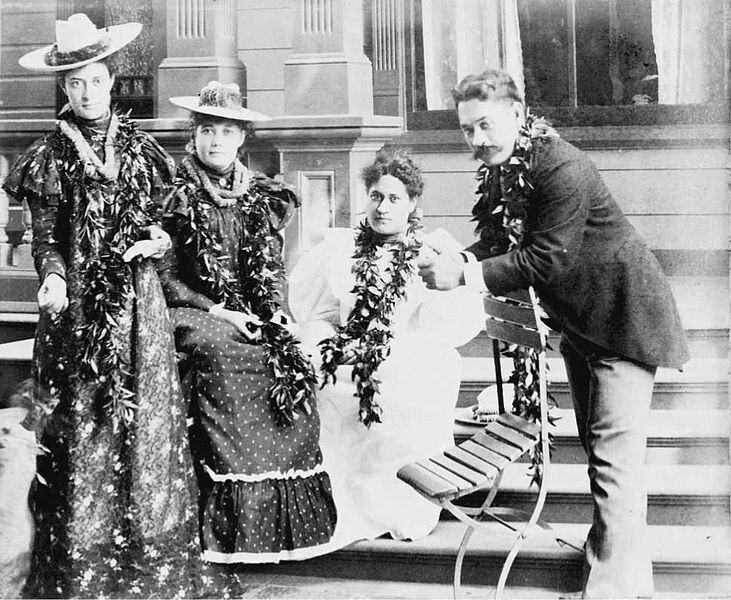
Vintage photo courtesy of Bishop Museum
Traditional to Modern Lei Materials
Ancient Hawaiians used braided human hair, bird feathers, shells and dog teeth for lei. Today, Lei are made using many different types of flowers, foliage, shells, beads, nuts, ribbon, feathers, candy and even money. Leis traditionally express love, reverent, respect, congratulations and welcome. They are worn by the bride and groom in weddings, horses, and riders in parades, and given as a gift of aloha for almost any special occasion, including birthdays, graduations, anniversaries, farewell parties and other ceremonies. Most visitors to Hawaii are familiar with the white and purple orchid flower leis found in grocery stores. My favorite are the lei that smell delicious, like pua kenikeni, pakalana, pikake, and ginger.
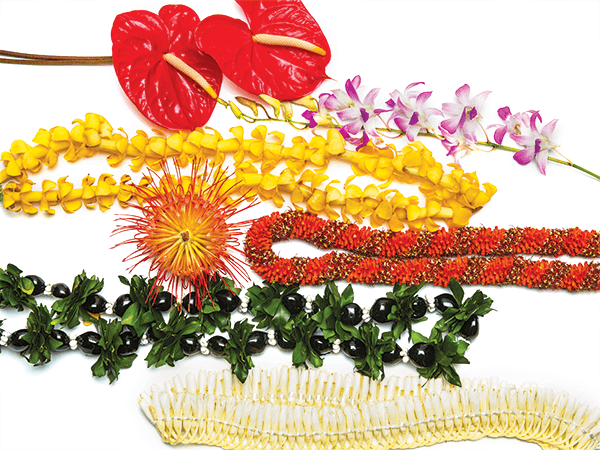
Photo By: David Croxford

Money Lei are popular at graduations. Photo Courtesy of Created by Lorriane
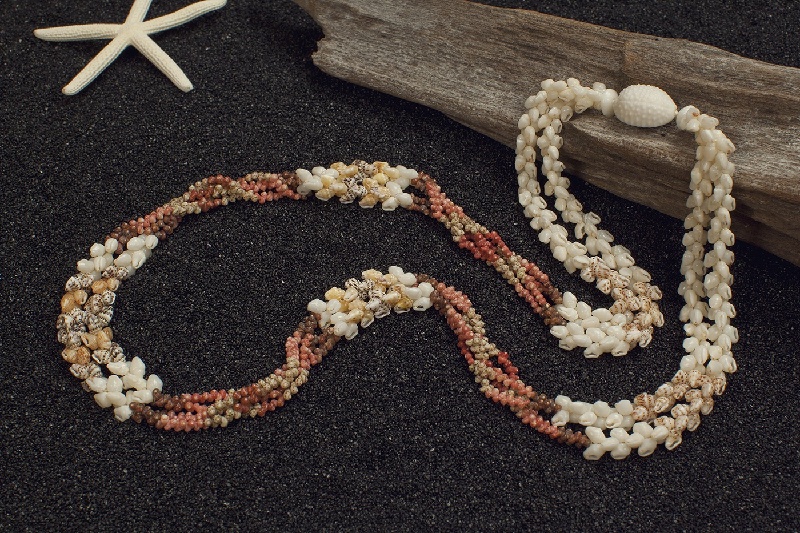
Ni’ihau 2 Strand Kipona Shell Lei Photo Courtesy of Kauai Curators
Modern Society and Lei
In our modern society, when we need a lei we probably stop by KTA Supermarket to pick one up. We often take for granted that lei themselves take quite a bit of effort to make. That is one reason why giving and receiving lei is so special. It takes a lot of time and energy to go into a forest and pick the flowers needed for lei. In some cases the flowers are only found in remote areas. For instance, Kauai’s signature lei flower is the mokihana, a green berry that grows on a vine. Mokihana flowers are found in the forests in Kokee (above Waimea Canyon). One does not simply go into the forest and pick a bunch of plants. Native Hawaiians and others, such as hula dancers, know there are protocols to follow when picking plant material for lei. Hawaiian chants are recited–often by the entire halau before entering a forest to gather flowers and gather only what they need. It can take an entire morning and afternoon just to find enough mokihana berries to pick for one lei. So it really shows that someone loves and respects you when they take that much time and effort to make you a lei.

Mokihana with ti leaf rope lei. Photo courtesy of Little Piece of Hawaii
Common Lei for Special Occasions
Some common types of lei you might see people wearing on special occasions include maile, ti-leaf, akulikuli, money, and even candy lei.
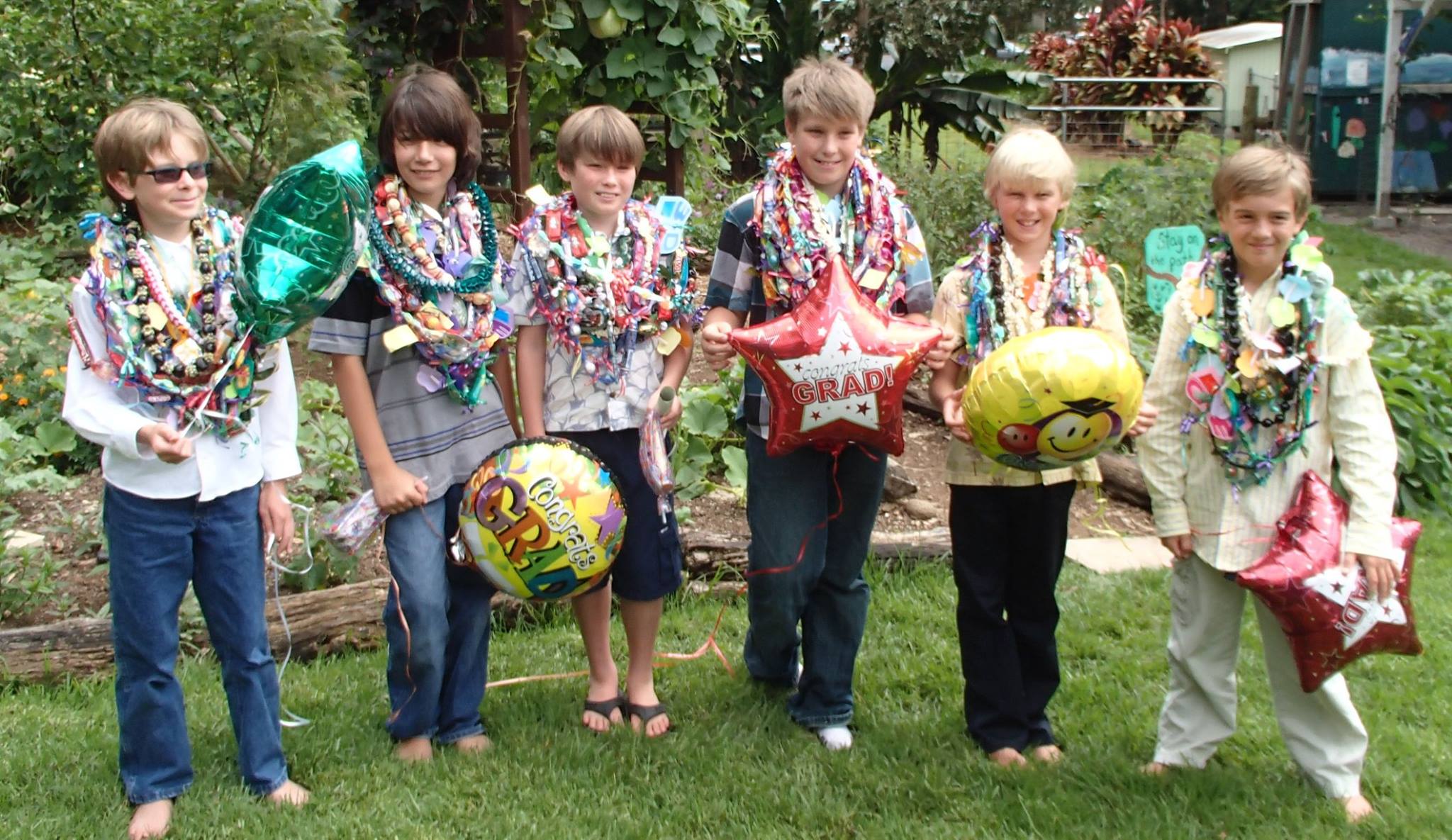
Fifth Grade Graduation at Waimea Country School
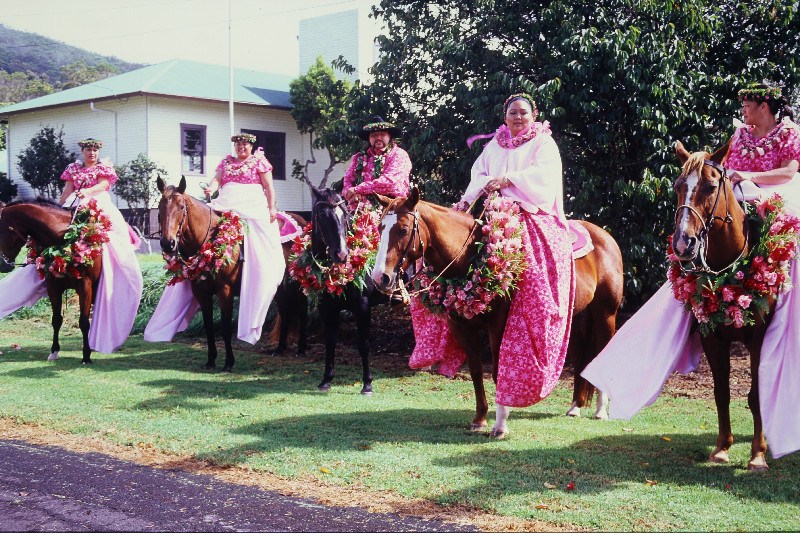
Waimea Aloha Parade circa 1980 Photography by Peter French
Maile Lei
Maile is a fragrant green vine that grows in forested areas. You will often see maile lei used at the opening or blessings of new buildings, groundbreaking ceremonies, graduations, and worn by men in weddings. Maile is considered the noblest of all lei. Associated with Laka, the Hawaiian patron goddess of hula, it often signifies peace between two groups. Maile lei are longer than the typical lei that rest around your shoulders and neck, typically at least three strands of maile lei are woven together and the lei hangs down to about your knees and is open ended. Like mokihana, it is also becoming increasingly difficult to find.
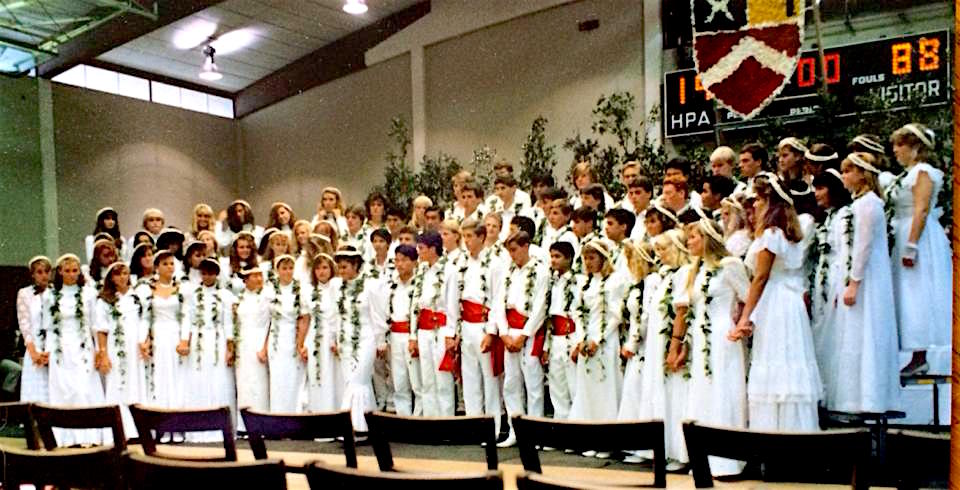
Maile Lei worn by the graduating class of ’88 at Hawaii Preparatory Academy
Ti Leaf
Another common lei is the ti leaf lei. Unlike mokihana and maile, Ti leafs plants are commonly found across our island. In fact, many people have ti leaf growing around their home. The plant is thought to ward off evil spirits and is considered an emblem of divine power. Ti leaf are used in cooking (laulau) and storing of food. The leaves of this versatile plant are also used to make rope, sandals, thatch, decorate stages, and parade floats.

Photo Courtesy of Aloha from Hawaii
May Day is Lei Day in Hawaii
I cannot write a blog about Lei in Hawaii without talking about Lei Day which was established as a holiday in the late 1920s. Lei Day is an annual statewide celebration in all of Hawaii on the first of May and is centered around the Hawaiian art and custom of making and wearing lei. Lei Day in Hawaii is a great blog detailing the lei and flower of each island. I love all the school celebrations that happen each year on May Day, students of all ages make and share lei, as well as, perform Hawaiian song and dance for their school and ohana (family).
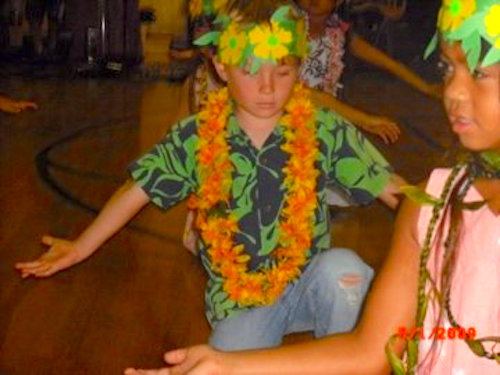
Lei Etiquette
There are only a few rules regarding lei–but they’re important.
- Since a lei is considered a symbol of love and affection and because a lot of time and energy goes into making a lei, it is considered rude to refuse a lei. It is also considered rude to remove the lei in front of the person who gave it to you.
- When giving a lei, it is important to remember that a kiss on the cheek is appropriate and expected, although I prefer to give a hug when I give lei.
- The proper way to wear a lei is to drape it across your shoulders, so it hangs in the back and front, instead of hanging around your neck.
- Depending on the type of materials used, a dried lei can last for years. Never throw a lei in the trash. Lei are made from nature and should be returned to nature, such as a garden.
Lei Superstition
- There is a common superstition in Hawaii that pregnant women should not wear lei as it is considered bad luck.
- History and folklore also warns to avoid presenting ti-leaf lei to politicians since it believed to be a bad omen.
Giving and receiving lei is my favorite Hawaiian custom. I am fortunate and grateful to have grown up in a place that celebrates nature’s beauty and shares the gift of Aloha!
With Aloha,
Julie Keller, RB
Direct: 808.987.7931
Email: Julie@HawaiiLife.com


Marcel DeRoy
February 8, 2018
Mahalo for the interesting articles. We hope in the near future to stop visiting the islands and make the move permanently.
Keep them coming!
Julie Keller
February 11, 2018
> Mahalo for reading my blog. Marcel! Feel free to reach out with any questions as you plan your permanent move. So exciting.